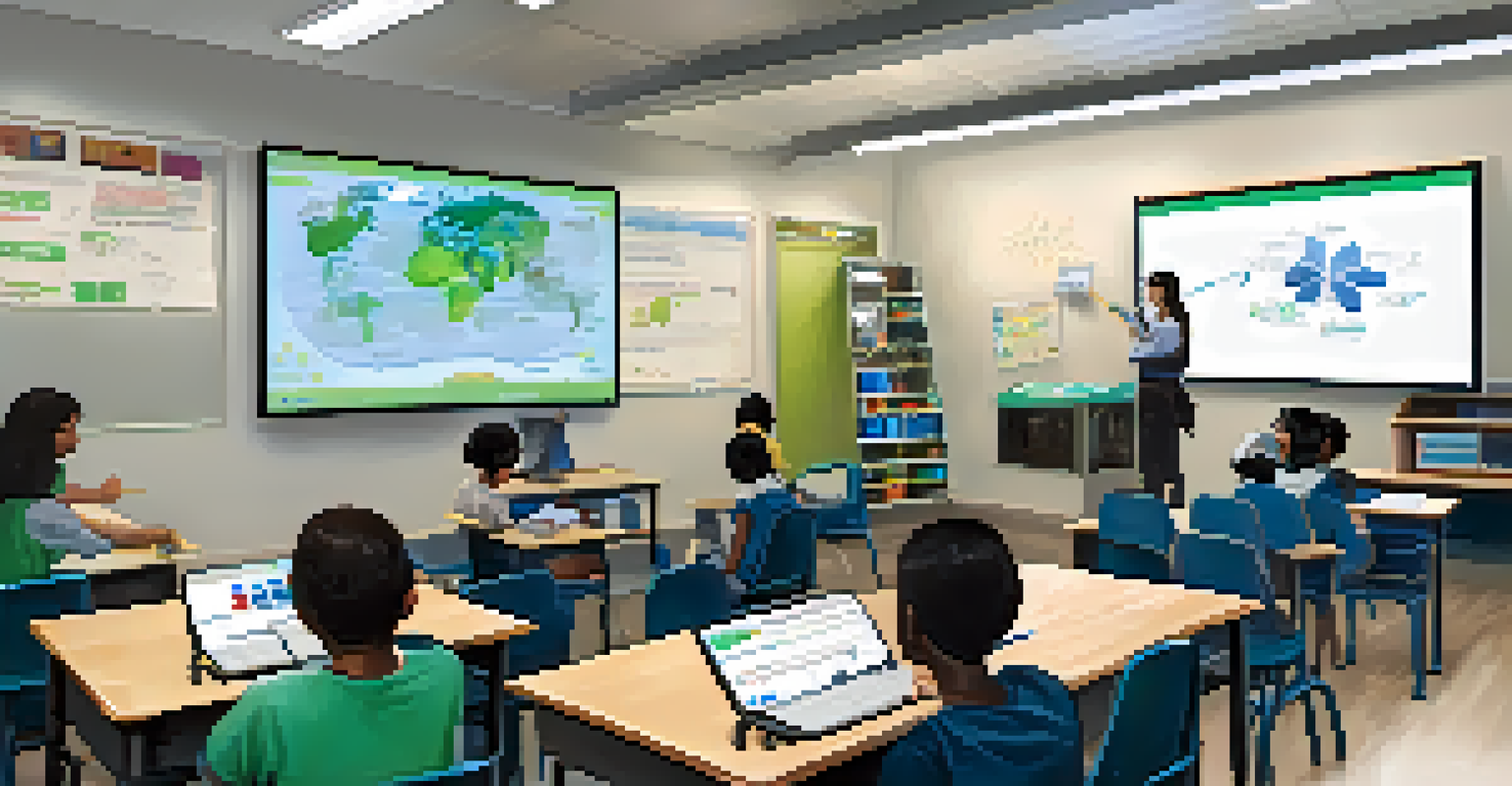STEM and Social Studies: Bridging Disciplines for Learning

Understanding the Intersection of STEM and Social Studies
STEM, which stands for Science, Technology, Engineering, and Mathematics, often focuses on technical skills and innovation. Meanwhile, social studies emphasizes understanding human behavior, culture, and the world around us. When combined, these disciplines can create a more holistic approach to education, allowing students to grasp complex societal issues through a scientific lens.
Science and technology are essential to the future of our nation and the world, but they cannot be separated from the social context in which they exist.
For instance, consider a project where students research climate change's impact on different communities. They can apply scientific methods to gather data while exploring the social implications on various populations. This blend not only deepens their learning but also fosters critical thinking and problem-solving skills, essential in today’s world.
Ultimately, bridging these two fields encourages students to see the relevance of STEM in everyday life, enriching their understanding of both subjects and preparing them for the challenges of tomorrow.
Benefits of Integrated Learning Approaches
Integrating STEM and social studies offers several key benefits for learners. First, it promotes engagement by showing students how these subjects relate to real-world issues. When learners can connect theoretical concepts to their communities, they become more invested in their education.

Additionally, this interdisciplinary approach encourages collaboration among students. Working on projects that involve both scientific inquiry and social analysis helps them develop teamwork skills and appreciate diverse perspectives. For example, a group project on urban development could highlight engineering challenges and the social dynamics of city planning.
Integrating STEM and Social Studies
Combining STEM with social studies enriches education by allowing students to tackle complex societal issues through scientific inquiry.
By blending STEM and social studies, educators can create a dynamic learning environment that not only enhances academic performance but also nurtures responsible citizens who understand the intricacies of societal challenges.
Real-World Applications of Combined Learning
One powerful example of combined learning in action is the creation of community gardens. Students can engage in various STEM activities, such as studying plant biology and soil chemistry, while also exploring the social benefits of providing fresh produce to their community. This project highlights how scientific knowledge can be applied to foster social change.
Education is not preparation for life; education is life itself.
Moreover, technology plays a crucial role in these projects. Students might use data analysis tools to assess the garden's impact on local health or employ social media to raise awareness about food deserts. Incorporating technology not only reinforces STEM skills but also enhances their social studies learning.
Such real-world applications help students see the immediate relevance of their education, making learning more meaningful and applicable to their lives.
Challenges in Merging STEM and Social Studies
While the integration of STEM and social studies is beneficial, it does come with its challenges. One significant hurdle is the differing teaching methodologies traditionally associated with each discipline. STEM education often emphasizes hands-on experiments and quantitative analysis, while social studies may focus more on discussions and qualitative assessments.
Additionally, curriculum constraints can make it difficult for educators to find the time and resources to develop integrated lessons. Educators might feel pressured to cover extensive material in both subjects, leading to a fragmented approach rather than a cohesive one.
Benefits of a Cross-Disciplinary Approach
This integrated learning fosters engagement, collaboration, and critical thinking, preparing students to become informed citizens.
Overcoming these challenges requires creativity and collaboration among educators. By sharing resources and strategies, teachers can create innovative lessons that seamlessly combine STEM and social studies, ultimately enriching the learning experience.
Strategies for Successful Integration
To successfully integrate STEM and social studies, educators can start by designing project-based learning experiences. These projects should encourage students to explore real-world issues that require both scientific understanding and social awareness. For instance, studying the effects of pollution on local communities can lead to discussions on environmental justice, merging both disciplines effectively.
Another strategy is to employ interdisciplinary teams of educators. Collaboration between STEM and social studies teachers can lead to the development of comprehensive lesson plans that address learning objectives from both fields. This teamwork not only enriches the curriculum but also models collaborative practices for students.
Lastly, utilizing technology can enhance integration efforts. Online platforms can facilitate research and collaboration, allowing students to work on projects that bridge both disciplines, thus fostering a more engaging and interactive learning environment.
Engaging Students Through Cross-Disciplinary Projects
Cross-disciplinary projects are an effective way to engage students in both STEM and social studies. For example, students could investigate the historical significance of a local landmark while applying engineering principles to design a model of its restoration. This hands-on approach not only captivates their interest but also deepens their understanding of the material.
These projects also foster critical thinking as students analyze how various factors—historical, environmental, and technological—interact with each other. By examining these relationships, students can appreciate the complexity of real-world issues, enhancing their problem-solving skills.
Challenges and Solutions in Education
While merging these disciplines presents challenges, creative collaboration among educators can lead to innovative, cohesive lessons.
Moreover, when students see their work have a tangible impact on their community, it instills a sense of pride and responsibility, encouraging them to become active, informed citizens.
The Future of Education: A Collaborative Approach
Looking ahead, the future of education lies in collaborative approaches that blend disciplines like STEM and social studies. As the world becomes increasingly interconnected, students need to be equipped with a broad skill set that includes scientific knowledge and social awareness. This holistic education can empower them to tackle global challenges effectively.
Educational institutions are beginning to recognize the value of interdisciplinary programs and are adapting their curricula accordingly. This shift not only prepares students for diverse career paths but also fosters a generation of critical thinkers and innovators.

Ultimately, embracing a collaborative approach in education will not only enhance student engagement and understanding but also create a more informed and empowered society.